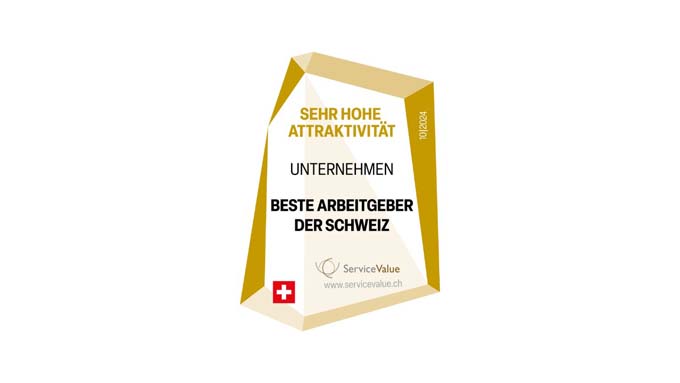Competence-oriented education and training in the professional environment
Learning begins with birth and ends with death. Life means lifelong learning.
Competence-oriented education and training in the professional environmentHumans are curious by nature, they want to develop and lead an autonomous life. This sparkling joy of discovery is particularly evident in young children, up to around the age of seven. Unfortunately, if we take a closer look at the enthusiasm for learning among 7- to 14-year-olds, we see that something often goes very wrong shortly after they start school. School may still be a good place to maintain social contacts and exchange ideas with one another, but unfortunately the classroom often becomes a collective bogeyman. This does not exactly speak well for the Swiss education system. On the other hand, Switzerland achieved an "outstanding result" in the 2012 PISA study, according to the EDK communiqué. No other European country achieved a significantly higher mean score than the Swiss Confederation. With these two sides of the coin - the desire to learn or the frustration of learning - we are already at the core topic: education controlling and competence-oriented education and training in the professional environment.
Learning over time
Our parents' generation learned a trade and practiced it until retirement age: "Cobbler, stick to your last," they said. That has changed fundamentally. Ever shorter development and knowledge cycles, faster technological leaps and innovations, and the trend toward specialization are permanently changing our working world. The rapid upheavals are reasons why the specialist experience that individuals acquire in their professional environment has a steadily shorter half-life. Since the turn of the millennium at the latest, the willingness to engage in "lifelong learning" has become a must for every specialist and manager in order to "stay on the ball" and be able to survive on the job market in the long term.
Only a fraction of today's forty-year-olds are still working in their learned professions; new fields of work are being added and familiar ones are disappearing. The ability to deal with change is becoming increasingly essential for coping with everyday life. To prepare for this, managers and HR developers must become experts in modern learning strategies and in change.
Learning with pleasure in a professional environment
The following six prerequisites stand for effective and enjoyable learning in a professional environment:
- The learning content should meet a real need, both for the company and for the learner.
- Only those things should be learned that can be implemented in professional practice in a timely manner (learning on the fly is obsolete).
- Learning opportunities and not ultimate truths are to be conveyed. This is important so that the seminar participant can seamlessly link what has been newly learned with his or her previous experiences in a self-determined manner.
- Even before the start of training, new areas of responsibility and work should be discussed and the job description adapted.
- Employees want structured and timely feedback in order to orient themselves and develop further. Employees can also deal well with negative feedback, provided that the person giving the feedback also gives suggestions for optimization.
- The corporate strategy should be transparent across the hierarchy. People want to be made aware of the company's plans for the future and then play an active role in shaping them. Ideally, employees are shown personal perspectives by the manager and negotiate together that are in line with the corporate strategy. In this way, the individual feels part of the whole.
If only a few of these points are taken into account, learning with pleasure and the successful integration of the new knowledge into everyday working life are a given.
Competence oriented learning
When we watch people at work, we can observe their concrete behavior and the implementation of their competencies: We see them welding two steel beams, creating a quote, designing a graphic, or talking about conflict with a third party. What we see is the output of their performance and their concrete achievement. What is going on inside people remains hidden: Why a performance is delivered in exactly this quality is not accessible to observation. For a person to be able to bring forth his or her full potential, two conditions must be met:
- He has access to his accumulated knowledge and skills, and
- he has the inner readiness to actively use his potential for the task set.
Education controlling in companies
Robert Watermann, an American management consultant, has reduced educational controlling to the following formula:
- "Give your employees work that requires them to use their skills to the fullest.
- Give them all the information and training they need to do this.
- Explain to them clearly what there is to achieve. ... And then - leave them alone!"
The following steps have proven effective for modern education controlling in companies:
- Regularly identify training needs and desired additional competencies, e.g., during annual reviews.
- Define new areas of responsibility and fields of work in which the employee can directly apply the skills learned after completing the training.
- assess the time required for the training measure and the transfer to everyday life and, if necessary, temporarily reduce his workload.
- Seek appropriate continuing education opportunities that meet the need.
- Conclude contract with the employee.
- Complete continuing education.
- Final meeting and hand over the expanded or new area of responsibility to the employee.
Education is measured by the future - not the past
Intelligent training controlling is always oriented towards the future and focuses on what has become different or more efficient in everyday working life after the training.
Many companies, on the other hand, are still oriented toward the past. They look at the deficits of the employee or manager and are surprised after the training measure that little or nothing has changed. The answer is obvious: Boss and employee focus on the past failures when selecting the training program. Thus, "new knowledge" often has to be built up. It would be better to focus on the existing competencies that are worth maintaining and to integrate the newly learned knowledge there. In order to focus on the resources and less on the deficits, work could be done with the following questions:
- What have I been doing well with my current skills?
- What additional skills would be supportive of my current and future role to help me do my job more efficiently and effectively?
- What benefit or gain would my area, my company and I have if I were to acquire these competencies?
- How many resources (time and money) are my company and I willing to invest so that I can acquire these competencies?
- What should I be temporarily relieved of at work so that I can muster the resources needed to acquire these competencies?
- What do I need to temporarily relieve myself of (e.g., social contacts, hobbies) so that I can muster the resources needed to acquire these skills?
From the employee's point of view, the desire for a sustainable, competence-oriented training program could be expressed as follows: "Show me the goals I should achieve, accompany me on the way there, reflect back to me where I am in my learning process, and also bear with me if I sometimes use side paths. Let me make my own decisions, but also let me know what consequences my decisions may have for me" (adapted from: Bönsch, Kohnen, Möllers et al., 2010, p. 44).
Do not look at deficits
Modern education controlling with a focus on competence-oriented education and training does not look at the deficits, but at the already existing competences and picks up there. The closer the new knowledge to be learned is located to the interface between knowledge and non-knowledge, the better it can be integrated by the participant into his or her everyday working life and there is no danger of being over- or underchallenged. With this approach, training budgets are used optimally with maximum output for the employee and the company.










